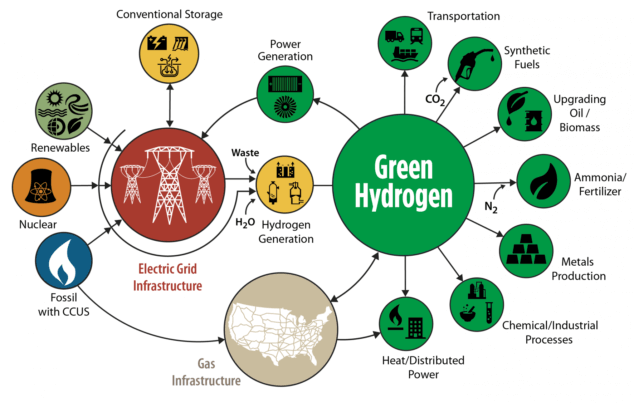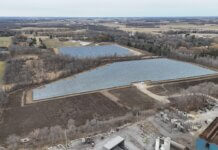NewHydrogen Inc. is beginning to provide green hydrogen generators to intermittent renewable power sites, such as wind and solar farms, to demonstrate economic viability and new technology under development.
Under the terms of a manufacturing supply agreement, Verde LLC, a Massachusetts-based manufacturer of green hydrogen generation systems, will supply the company with hydrogen generation systems.
“We are very excited about our new business relationship with Verde and our plan to partner with operators of intermittent renewable power sites, such as wind and solar farms,” says David Lee, CEO of NewHydrogen. “Verde will manufacture the systems for NewHydrogen, which the company will purchase for use at the sites.”
The company is targeting wind and solar farms which produce excess solar and wind energy during certain times of the day. This power can be used to run an electrolyzer (the primary component in a hydrogen generator) that converts water into green hydrogen, which is distributed in pipelines and converted back into electricity when needed. This green hydrogen can be stored in tanks and underground caverns, forming a network that can energize industry and back up electric grids. Having the flexibility to redirect unused energy capacity into making fuels can fill the gap between constant energy demands and variable energy resources.
“For NewHydrogen, this is a major leap forward,” Dr. Lee adds. “By owning and controlling the hydrogen generators at these sites, we will be able to move very rapidly to demonstrate the economic viability of this approach, as well as new technology currently under development including our breakthrough catalysts.”
The goal of NewHydrogen’s sponsored research at UCLA is to lower the cost of green hydrogen by eliminating or drastically reducing the use of precious metals in electrolyzers. Electrolyzers currently rely on rare earth materials such as iridium and platinum. These materials often account for nearly 50% of the cost of electrolyzers.
In 2021, the sponsored program at UCLA developed a non-precious metal-based catalyst with significant improvement of oxygen evolution reaction (OER) in acidic conditions for proton exchange membrane (PEM) electrolyzers. Researchers then improved the catalyst performance by modifying the structure and optimizing loading conditions. Most recently, application of a unique surface engineering technique further improved the long-term stability of the catalyst. Higher stability implies reduced operating cost of electrolyzers in the longer term.
In a parallel effort, researchers have been developing hydrogen evolution reaction (HER) catalysts for alkaline electrolyzers. Their work is focused on developing platinum based HER catalysts that use significantly less platinum, as well as a totally new type of HER catalyst that does not use platinum at all. To date, significant progress has been made on both fronts. This is in line with the Company’s focus on developing OER catalysts to enable electrolyzers that cost less to manufacture and to operate.
“Prior to scaling up the process for studies with a prototype electrolyzer in late 2022, researchers will continue to explore additional improvements to both the OER and the HER catalysts to maximize the overall performance of an actual water electrolysis device,” Dr. Lee concludes.




